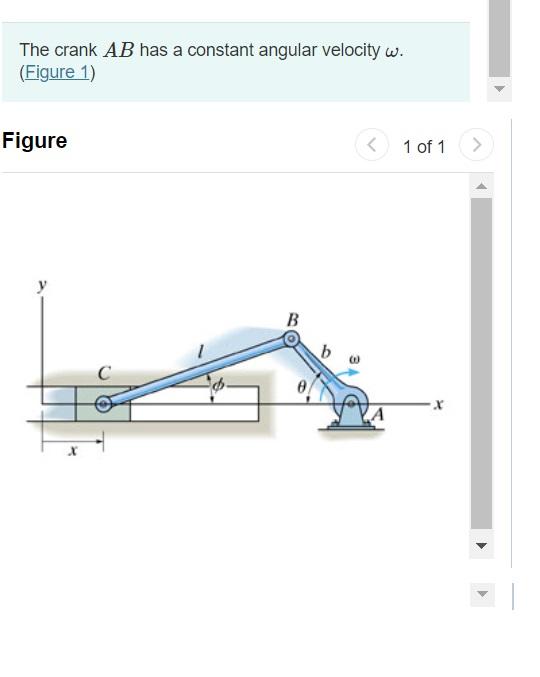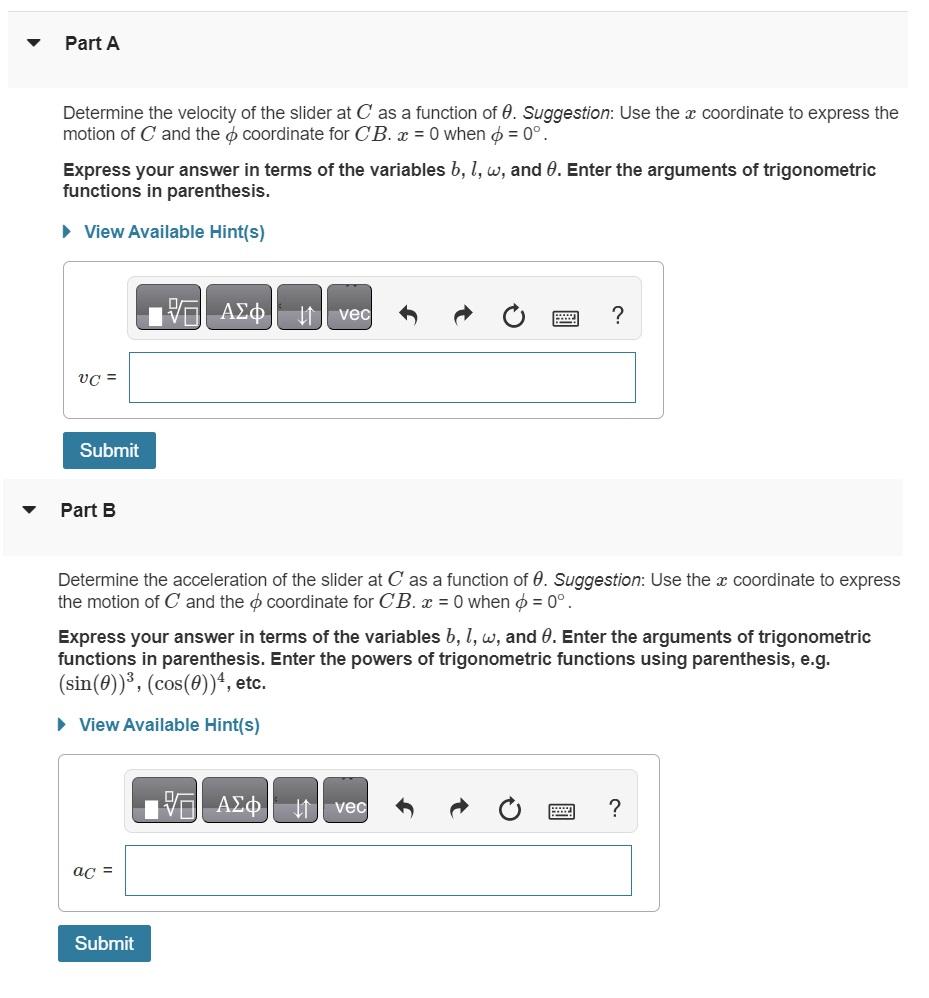Home /
Expert Answers /
Mechanical Engineering /
the-crank-ab-has-a-constant-angular-velocity-figure-1-figure-1-of-1-determine-the-velocity-pa999
(Solved): The crank AB has a constant angular velocity . (Figure 1) Figure 1 of 1 Determine the velocity ...
The crank has a constant angular velocity . (Figure 1) Figure 1 of 1
Determine the velocity of the slider at as a function of . Suggestion: Use the coordinate to express the motion of and the coordinate for when . Express your answer in terms of the variables , and . Enter the arguments of trigonometric functions in parenthesis. Part Determine the acceleration of the slider at as a function of . Suggestion: Use the coordinate to express the motion of and the coordinate for when . Express your answer in terms of the variables , and . Enter the arguments of trigonometric functions in parenthesis. Enter the powers of trigonometric functions using parenthesis, e.g. , etc.
Expert Answer
To determine the velocity of the slider at point C, we can first find the position of point C as a function of time. Let CB be the perpendicular distance from point B to the horizontal line passing through point A, and let the angle between the crank and AB be ?. Then, the position of point C can be expressed as: where ? is the angle between the slider and the horizontal line passing through point A.

